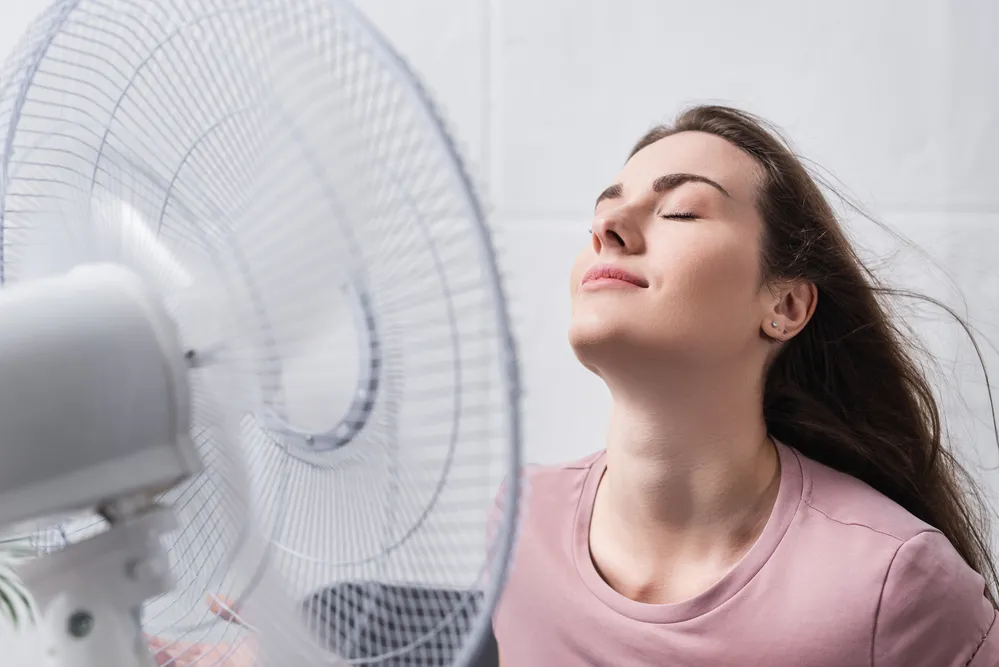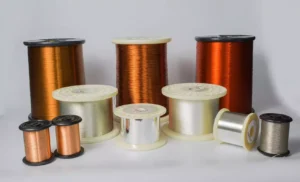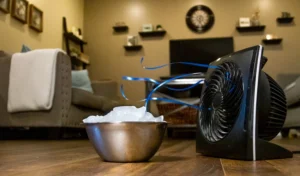Feeling the summer heat creeping in?
Waiting until the first heatwave hits often means you’ll face high prices and low stock.
Planning your purchase is the key to staying cool and saving money.
The best time to buy electric fans depends entirely on who you are.
For personal use, buy it just before you need it.
For businesses, planning must start months, or even a full season, in advance to get the best prices and ensure you have stock for summer.
The perfect time to buy a fan is not the same for everyone.
Your ideal purchasing window changes a lot depending on if you’re buying a single fan for your bedroom or thousands of fans for your retail business.
The supply chain for fans is long, and planning ahead is the most important factor.
Let’s look at the details for each situation so you can make the best choice.
The Best Time to Buy Based on Your Role
The best time varies greatly.
Individuals should buy when they need one.
Retailers need stock as summer begins.
Wholesalers must order a month before that, and importers should plan their entire summer stock during the previous winter.
The journey of a fan from the factory to a home is a long one, with many steps.
Each person or business in that chain has a different role and a different “best time” to act.
If one link in the chain is late, everyone after them is affected.
This is why timing is so critical in the fan business.
A sudden heatwave can create a massive surge in demand, and only those who planned ahead will be ready to meet it.
Let’s break down the timeline for each type of buyer.
For Personal Use
If you are just buying a fan for your home, the rule is simple: buy it when you need it.
However, it is smart to buy it a little before you desperately need it.
If you wait for the first hot week of summer, stores might be crowded or even sold out of the best models.
The ideal time for a personal purchase is in late spring.
The weather is getting warmer, but the huge rush has not started yet.
This gives you the best selection without the pressure.
For Retailers
As a retailer, your job is to have fans on your shelves the moment customers start looking for them.
This means you need to have your stock ready to go as soon as the weather starts to turn hot.
You should place your orders with wholesalers or distributors in the late spring.
This ensures the fans arrive in your store for the beginning of summer.
If you order too late, you risk missing the first, and often biggest, wave of customer demand.
For Wholesalers
Wholesalers supply the retailers.
Your timing needs to be one step ahead.
You must anticipate the needs of all the retail stores you work with.
A good rule is to have your fans in your warehouse at least one month before the summer heat truly begins.
This means you should be placing your large orders with manufacturers or importers in the early spring.
This buffer gives you time to receive the shipment and organize it for distribution to retailers before their own busy season starts.
For Importers
Importers have the longest and most complex job.
You are bringing the fans into the country from the manufacturer.
Your planning needs to start much, much earlier.
You should be talking with factories and planning your entire summer sales strategy during the winter.
To be safe, your shipments of fans should arrive in the country about two months before summer starts.
This long lead time is necessary to account for manufacturing, international shipping, and potential delays at customs.
Here is a simple table to show the timelines:
| Role | Planning Phase | Order Placement | Goods Arrive | Ready for Sale |
| Importer | Winter | Late Winter | Mid-Spring | Late Spring |
| Wholesaler | Early Spring | Early Spring | Late Spring | Before Summer |
| Retailer | Late Spring | Late Spring | Early Summer | Start of Summer |
| Individual | As Needed | As Needed | Immediately | Immediately |
How to Get the Best Price on Fans
Everyone wants a good deal on what they buy.
But fan prices can change a lot throughout the year, just like the weather.
Knowing when to order and how much to buy can get you a much, much better price than you would normally pay.
The best prices come from buying in large quantities.
Also, placing orders with manufacturers during their off-season, typically from July to September, can get you a price for one container that you would normally only get for three.
Price is not just about a single number.
It is a result of supply, demand, and timing.
For bulk purchasers like wholesalers and importers, the price you pay is one of the most important factors for your business’s success.
There are two main ways to get a better price: buying more and buying at the right time.
These two factors are often connected.
A buyer who has the money and warehouse space to do both can get a huge advantage over competitors.
The Power of Volume
This is a basic rule of business: the more you buy, the cheaper each item becomes.
Factories that make fans have high setup costs.
It takes time and money to get the machines ready to produce a certain model. If they only make 100 fans, the cost of that setup is spread across those 100 fans.
If they make 10,000 fans, the setup cost is spread across a much larger number, so the cost per fan goes down significantly.
This is why a business buying a full shipping container (a 40-foot container, or 40hq) will pay a much lower price per fan than a small store buying just one pallet of fans.
The Secret of Off-Season Ordering
This is the most important tip for getting a great price.
Fan factories in China have a very clear busy season and slow season.
The busy season for production is from November to May.
This is when everyone is ordering to get ready for summer in the Northern Hemisphere.
During this time, factories are busy, and prices are higher.
The slow season is from July to September.
During these months, summer is already happening, and most big orders have already been delivered.
Factories become quiet. They want to keep their skilled workers employed and their machines running.
To do this, they offer big discounts.
As the provided information states, you can get a price for one container that would normally only be possible if you bought three containers.
This is a massive saving.
Balancing Price and Practicality
Of course, ordering in the off-season has its own challenges.
You need two things: money and space.
You must have the capital to pay for the fans almost a year before you sell them.
You also need a warehouse to store those fans from the time they arrive (maybe in the fall) until you ship them out the next spring.
This strategy is only for well-funded businesses that can handle the logistics.
| Ordering Strategy | Pros | Cons |
| Off-Season (Jul-Sep) | Huge price discounts, better attention from the factory. | Requires large upfront payment, needs warehouse storage for months. |
| Peak-Season (Nov-May) | Pay closer to the sales season, less storage needed. | Higher unit price, longer production times, less factory flexibility. |
Understanding Fan Delivery Speeds
You have placed your order for fans.
That is a great first step.
But getting them delivered on time is just as important.
A late shipment can mean you miss the crucial summer heatwave, leaving you with stock you cannot sell.
Several factors can speed up or slow down your fan delivery.
Delivery can be as fast as 20 days if the factory uses standard materials.
However, ordering during the peak manufacturing season from November to May can extend this to 45-60 days due to high demand and factory backlogs.
The time it takes from placing an order to receiving your goods is called the “lead time.”
For fan importers and wholesalers, managing this lead time is essential.
A shorter lead time gives you more flexibility to react to the market.
A longer lead time forces you to make predictions far in advance, which is always risky.
Three main things affect how fast your fans can be made and delivered.
Factor 1: Materials and Customization
The fastest way to get your fans is to order a model that the factory considers “standard.”
This means they use materials, parts, and colors that they always have in stock.
If all the components are ready, the factory can put your order on the assembly line quickly.
In this case, the production time can be as short as 20 to 30 days.
However, if you want to customize your order—for example, with a unique color, a special type of motor, or your own branded packaging—it will take longer.
The factory will need to order these special materials.
This adds extra time to the process before production can even begin.
Factor 2: The Busy Season
As we discussed with pricing, the factory’s schedule makes a huge difference.
If you place your order during the peak manufacturing season (from November to May), the factory is already very busy.
Your order will be placed in a queue behind other orders.
Even for a standard fan, the production time can stretch from a normal 30 days to 45 or even 60 days.
The factory is running at full capacity, and there is simply a line you have to wait in.
If you order during the slow season (July to September), your order gets more attention and can be completed much faster.
Factor 3: Capital and Warehousing
This connects back to our previous points about price and planning.
Your own business resources directly impact delivery speed.
- If you have enough money and warehouse space: You can place your order during the factory’s slow season. You get a better price and a faster production time (usually around 30 days). You have full control.
- If you have limited funds and no warehouse: You are forced to order during the busy season, closer to when you need to sell the fans. This means you will likely face a longer production time of 45-60 days. You have less control and are subject to the factory’s busy schedule.
How Many Fans Should You Buy?
You are interested in buying fans directly from a factory to get a better price.
But this path has its own rules.
Trying to buy too few units can be impossible or simply not worth the cost and effort of international shipping and customs.
It is important to know the minimums and find the right buying strategy for your size.
For small quantities, it is almost always better to buy from a local supplier.
For larger orders from China, you may need a logistics partner to help.
If you want custom branding, the minimum order is often around 1,000 units per model.
The question of “how many” is a strategic one.
Your purchasing volume determines your options.
A large importer and a small local shop operate in completely different ways.
Understanding where you fit helps you choose the smartest and most cost-effective way to source your fans, whether it’s from down the street or from a factory across the world.
Local vs. Direct Sourcing
If you are an individual user or a very small retailer, buying locally is your best bet.
The process is simple: you go to a store or a local wholesaler, pay, and take the goods.
You do not have to worry about international shipping, customs clearance, import taxes, or quality control from thousands of miles away.
More importantly, if there is a problem with a fan, you have easy access to after-sales service like returns or warranty claims.
The slightly higher per-unit price is worth the convenience and peace of mind.
The Role of a Logistics Partner
Let’s say you are a medium-sized business.
You want to buy more than a few pallets but maybe not a full container.
In this case, you can consider buying directly from a factory in China, but only if you have help.
A logistics partner, also known as a freight forwarder, is a company that handles the entire shipping process for you.
They will arrange for the goods to be picked up from the factory, loaded onto a ship, and managed through customs in your country.
If you have a trusted logistics partner, buying directly from China becomes a real option even for smaller bulk quantities.
The Minimum for Customization (MOQ)
If you want to build your own brand, you will need to customize the fans with your logo and packaging.
Factories have a rule for this called the Minimum Order Quantity, or MOQ.
This is the smallest number of units they are willing to produce for a custom order.
For fans, a typical starting MOQ for a new partner is 1,000 units of a single model.
Factories need this minimum to cover the costs of setting up their production line specifically for your design and branding.
A Smart Alternative: Factory Inventory
What if your needs are somewhere in the middle?
You want a better price than local, but you cannot meet the 1,000-unit MOQ.
There is another option: ask the factory about their available stock or inventory.
Sometimes factories have leftover products from a cancelled order or an overrun in production.
They are often willing to sell this stock at a good price in smaller quantities.
The downside is that you have no control over the product’s design, color, or branding.
But it can be a great way to get a good deal on a few hundred units.
Conclusion
In summary, the best time to buy fans is not a simple answer.
It depends completely on your goals.
Plan ahead, understand the yearly production cycle, and match your buying strategy to your business size and resources for the best possible results.
Frequently Asked Questions
What month do fans go on sale?
Fans often go on sale for consumers at the end of summer, like in August and September.
Stores try to clear out any unsold inventory to make room for autumn products.
Is it cheaper to buy a fan in winter?
Yes, it is often cheaper for a person to buy a fan in the winter due to lower demand.
For bulk importers, ordering from the factory in winter is essential for summer stock.
Do fans go on sale for Black Friday?
Yes, you can often find deals on fans during Black Friday sales events.
Retailers may offer discounts on current models as they prepare for new inventory for the next year.
How much electricity does a fan use?
A typical pedestal or box fan uses very little electricity, usually between 50 to 100 watts.
This is much less than an air conditioner, making them a very energy-efficient cooling option.
Is a tower fan better than a box fan?
It depends on your needs.
Tower fans are quieter, take up less space, and often have more features.
Box fans are usually cheaper and can move a large volume of air effectively.
How long should a fan last?
A well-maintained fan from a quality brand can last for many years.
With regular cleaning to remove dust from the blades and motor, a good fan should work for 5-10 years or more.







